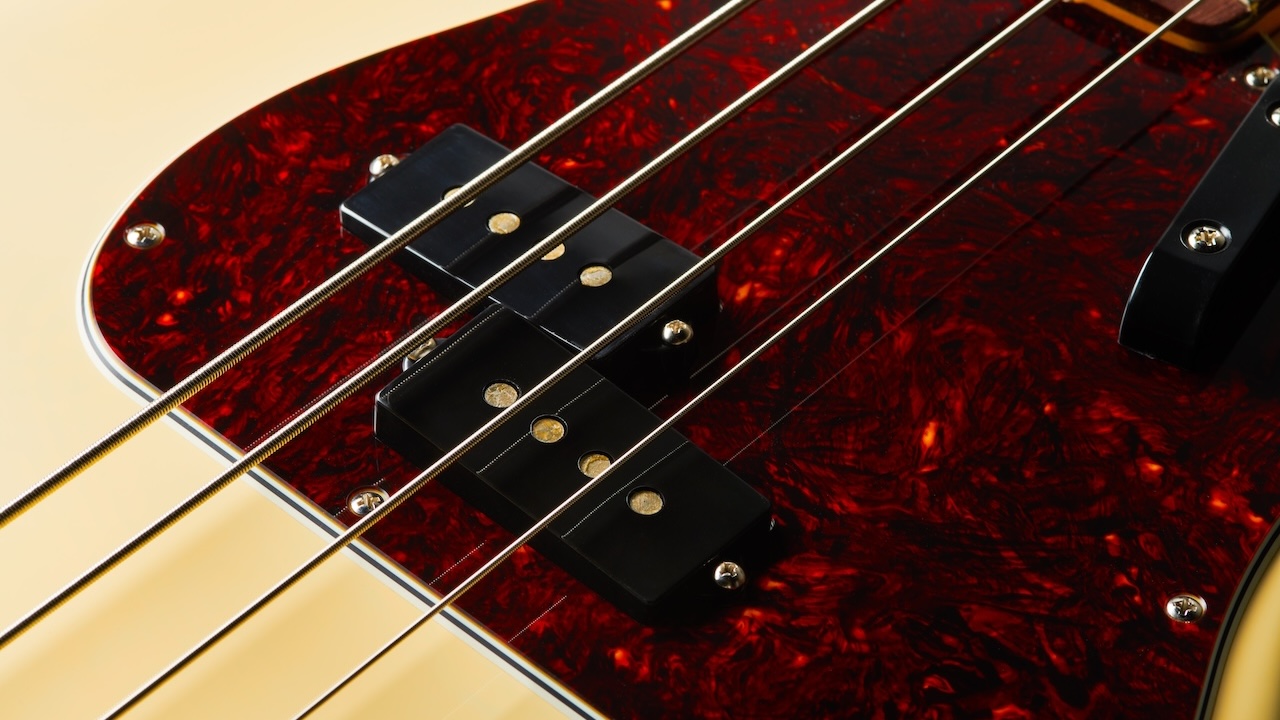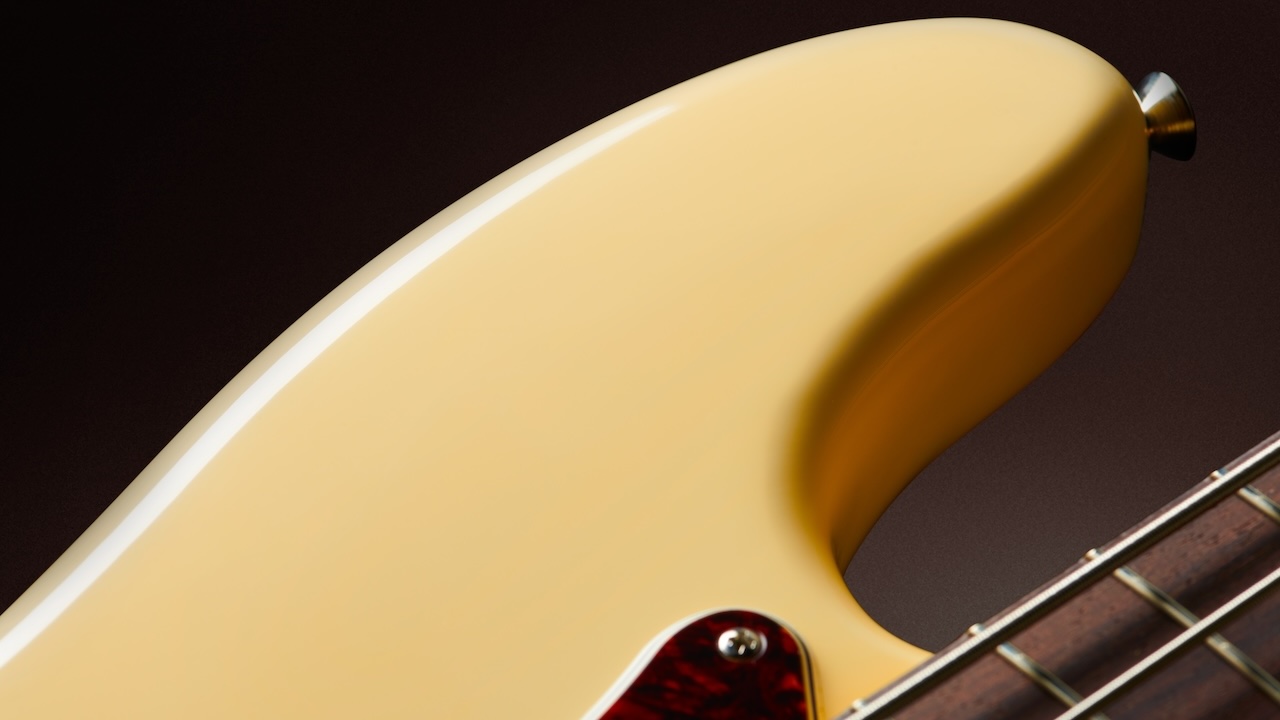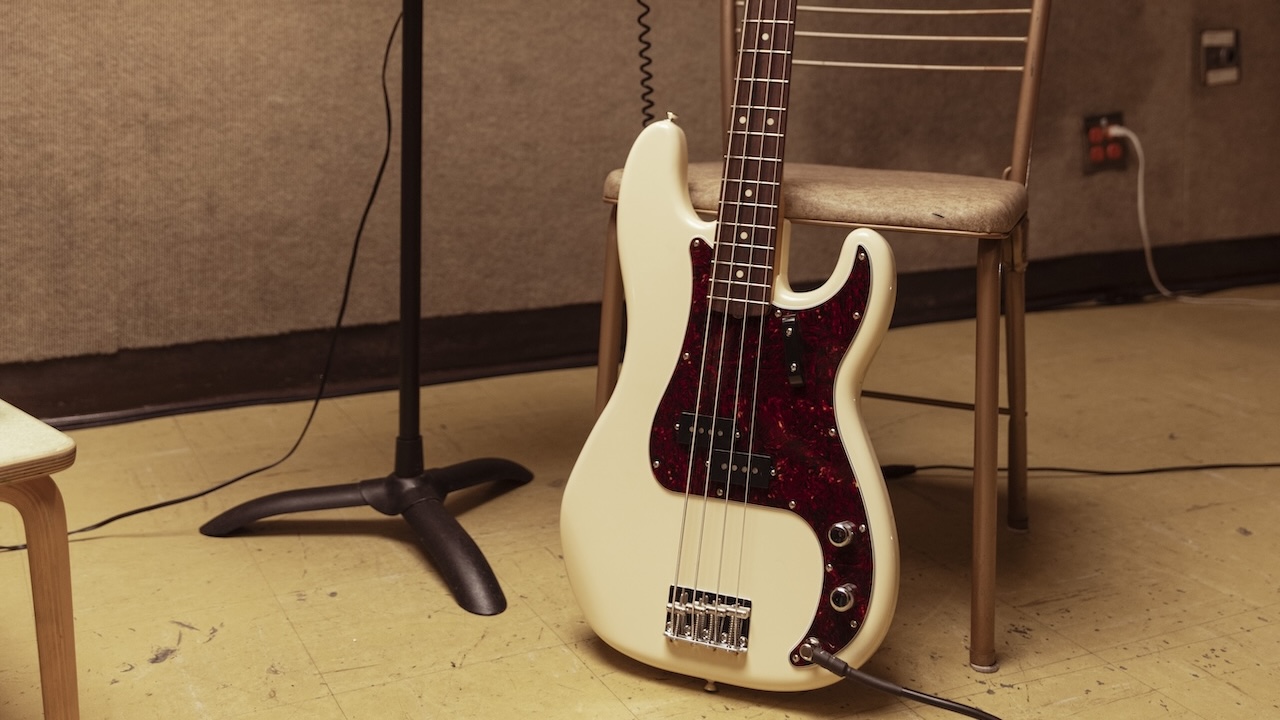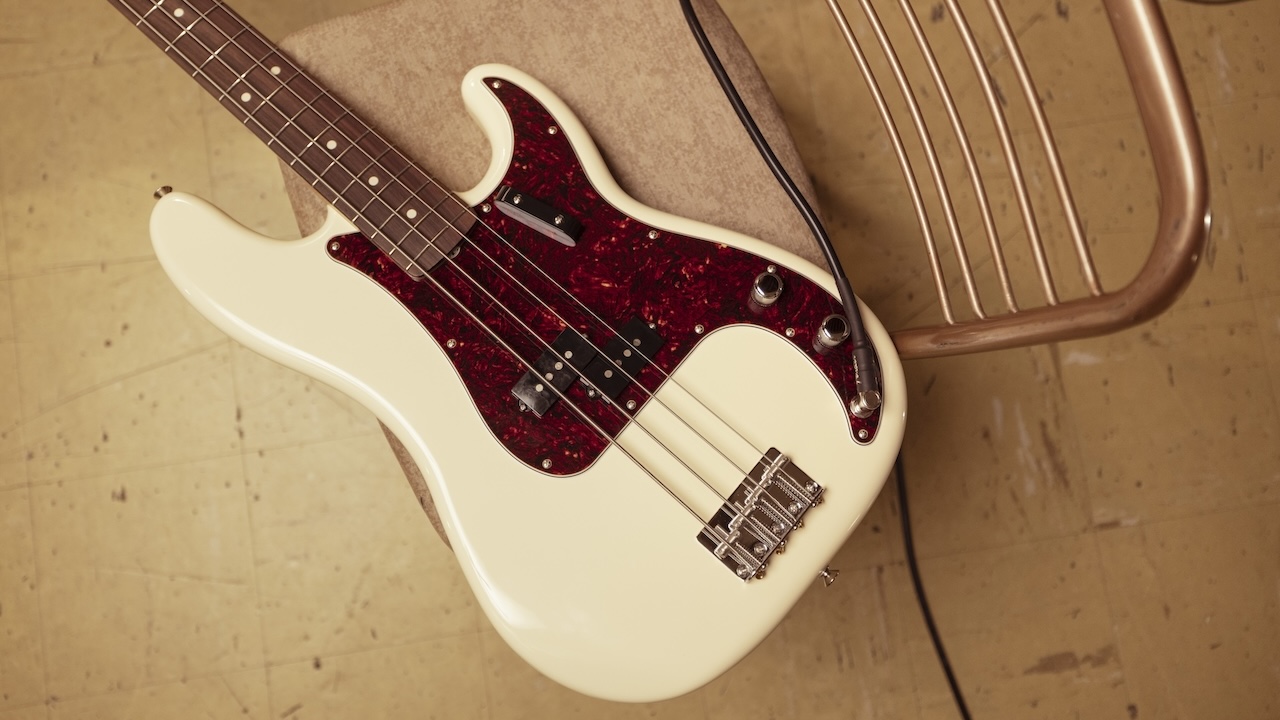Guitar World Verdict
Offering a combination of some of the best vintage P-Bass features, this Vintera II is a fantastic reminder of why the Fender Precision Bass has remained the ‘go-to instrument’ for so many bass players, for so long.
Pros
- +
High standard of build and setup.
- +
Terrific body and neck finishes.
- +
Complete set of P-Bass sounds.
Cons
- -
Some of the vintage-styled features won’t suit everybody.
You can trust Guitar World
While Leo Fender will be forever revered for his iconic Telecaster and Stratocaster electric guitar designs, without doubt his greatest contribution to the advancement of popular music was unveiled in October 1951 – the first year of the Precision solid-body electric bass.
There were attempts at an electrified double bass before the P-Bass, but nothing that has become anywhere near as influential. The main characteristics that we know and love were achieved back in 1957. The secret was essentially an effective 34-inch scale length and split-coil humbucking pickup.
The Fender Vintera II ’60s Precision Bass pays tribute to this era, striking a balance between reissuing period-correct detail and including some sensible improvements.
Bearing in mind that the original ’60s P-Bass that this model is based on was immortalised by the likes of James Jamerson and Carol Kaye, this vintage-inspired modernization could be a real winner.
Features
The balance of the bass is excellent; the body weight is just right – not too heavy and not too flimsy-feeling – and with the lightweight tuners there are no neck dive issues whatsoever. Even on your lap it stays pretty much horizontal without holding it – much better than a vintage Fender! And the quality of finishing and setup is top-notch.
The body is alder and the bolt-on neck is maple with a 7.25-inch fingerboard radius and an early ‘60s C-shape profile.
While the early ’50s P-Bass had a single straight pickup with four magnetic pole pieces – one per string – in 1957 this was changed to the current ‘split’ design to improve hum cancelling, and also to make two pole pieces per string so that any magnetic pull was decentralized. Generally it was thought that this led to an improvement in tone, and the modification has survived on virtually every version of the P-Bass ever since.

Vintage enthusiasts looking for period-correct details will be impressed by the vintage-style bridge with its threaded steel saddles. Up until 1970, the bridge saddles on Fender basses were threaded all the way across, enabling you to adjust the string spacing according to your personal preference.
In essence this is a good idea, but the problem is that there is no visual reference as to where the string was resting before, so every time you change strings you either need to remeasure the spacing or just guess, which hardly makes it a precision affair!
From the front, the vintage-style open-gear tuning machines still look very vintage, with a cloverleaf design, but according to Fender they have a finer gear ratio and enhanced tuning stability.



Sounds
If you’ve played a P-Bass with a rosewood fretboard before, you know what you’re getting here. Strung with roundwound strings you get an upfront sound, with plenty of midrange poke. This isn’t the smoothest or most refined of sounds, but it sits so well in the mix with a band that you’ll always cut through, but still with sufficient support in the low end.
The key here is the tone control. It’s only one knob, but such a lot of variety is available that it’s all you need. Backing it off slightly tames the top-end ‘clank’ and puts you in a subtler zone. A little more and we’re really starting to get a smoother sound, and when you get to fully off you’re in the ‘under a duvet’ zone, so more scope from a simple passive tone control could not be had.
If Duck Dunn’s more your thing, then it’s flatwounds that you’ll need, giving you a much smoother and more retro sound, but it should still retain enough bite that you don’t disappear completely into the world of thud.

Conclusion
Despite a gradual succession of refinements that have been made over the years, the Fender Precision has remained remarkably unchanged since its inception and still looks as good, and as relevant, in today’s music scene as ever. Right away you can see why so many players have been drawn to this bass.
What the Vintera II ‘60s P-Bass offers is a ‘best-of’ in terms of retro features. Drawing upon an impressive list of very functional features, the design offers a great mix of old and new together with outstanding build quality and finishing. It’s a perfect reminder of Leo Fender’s quest for both form and function.
Specs
- PRICE: $1,149
- TYPE: 4-string solidbody bass guitar
- BODY: Alder
- NECK: Maple
- FINGERBOARD: Rosewood
- SCALE LENGTH: 34" (86.36cm)
- FRETS: 20
- PICKUPS: Vintage-Style '60s Split Single-Coil Precision Bass
- CONTROLS: Master Volume, Master Tone
- HARDWARE: 4-Saddle Vintage-Style Bridge with Threaded Steel Saddles, Vintage-Style Open-Back tuners
- CONTACT: Fender.com

Nick Wells was the Editor of Bass Guitar magazine from 2009 to 2011, before making strides into the world of Artist Relations with Sheldon Dingwall and Dingwall Guitars. He's also the producer of bass-centric documentaries, Walking the Changes and Beneath the Bassline, as well as Production Manager and Artist Liaison for ScottsBassLessons. In his free time, you'll find him jumping around his bedroom to Kool & The Gang while hammering the life out of his P-Bass.
“I use a spark plug to play slide. It's a trick Lowell George showed me. It gets incredible sustain – metal on metal”: In the face of sexist skepticism, Fanny's June Millington carved a unique six-string path, and inspired countless players in the process
“An esoteric boutique vibe, superb ergonomics and a powerful, unique preamp – Tobias is back”: Tobias Growler IV review
The heaviest acoustic guitar ever made? Two budding builders craft an acoustic entirely from concrete because they “thought the idea was really funny”










